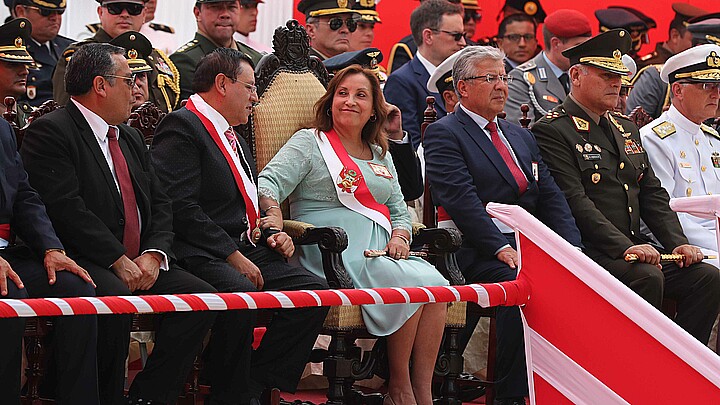Politics
Peruvians cut chicken from diet as inflation skyrockets
"The chicken that we used to buy ... is now inaccessible. For us as soup kitchens, chicken has ceased to exist"
April 13, 2022 3:48pm
Updated: April 14, 2022 6:05am
As food and fuel prices continue to rise across Latin America, many Peruvians are struggling to make ends meet and have resorted to cutting proteins, instead loading up on more affordable carbohydrates.
This has especially affected the Andean country’s poorest residents as soup kitchens struggle to feed increasingly large crowds of unemployed or underemployed individuals who can’t keep up with the rapidly rising prices, a Reuters report revealed.
"The rise in prices is huge," said Jenifer Mondalgo, president of the soup kitchen association in a Lima slum. "The chicken that we used to buy ... is now inaccessible. For us as soup kitchens, chicken has ceased to exist."
According to Mondalgo, her team has resorted to begging for bones, skins or other unused pieces at local markets in order to serve at least some animal protein to her clients. Previously, she recalls that soup kitchens were able to offer lunch for 1 sol ($0.27), but laments that many operations have now been forced to charge 1.5 soles ($0.40).
Rising prices have made procuring food increasingly difficult and many of Peru’s poorest citizens have been forced to forage for food in the trash.
Although leftist President Pedro Castillo has taken steps to lower prices and mitigate rising prices, increasingly angry Peruvians have taken to the streets in recent days to protest the government’s inability to combat rising food and fuel prices.
So far, his government has waived sales tax on food staples and raised the minimum wage by 10% to 1,025 soles ($275). The state has also offered vouchers to subsidize cooking gas for Peru’s poorest residents.
"Things like vegetables and potatoes used to be cheap. Now they are super expensive," said Elena Rodriguez, the resident of one of Lima’s many slums. "I don't know what to do anymore."
But as prices continue to rise, many Peruvians worry that soup kitchens won’t be able to keep up.
"If soup kitchens ceased to exist, our lives would be terrible," said Maria Sanchez, a mother of six who is currently struggling to feed her family.
"We wouldn't know what to buy because everything is so expensive at the market."
Inflation rates have hit historic highs around the globe as rising energy costs, supply chain disruptions and the war in Ukraine continue to push the price of consumer goods up by more than what economists had originally predicted.
Yet nowhere in the world has been hit as hard as Latin America, where inflation has exceeded policy makers’ targets in all of the region’s major economies. This month, inflation hit 6 percent in Chile, 6.2 percent in Mexico, 10.7 percent in Brazil and 52 percent in Argentina.
“Major Wall Street banks are forecasting average cost-of-living increases across Latin America will end the year above 10%, the highest globally, and predict pressure on consumer prices will extend well into 2022,” wrote Maria Eloisa Capurro at Bloomberg.
These price increases are adding to the economic woes of a region that was hit particularly hard by the COVID-19 pandemic, with strict measures still in place and vaccination rates lower than much of the developed world.
As the region finally begins to emerge from the worst economic crisis in 200 years, Latin Americans must grapple with the prospects of low growth and rampant inflation.
For millions of families across the region, this means that eating three meals a day will be increasingly difficult if not impossible.










